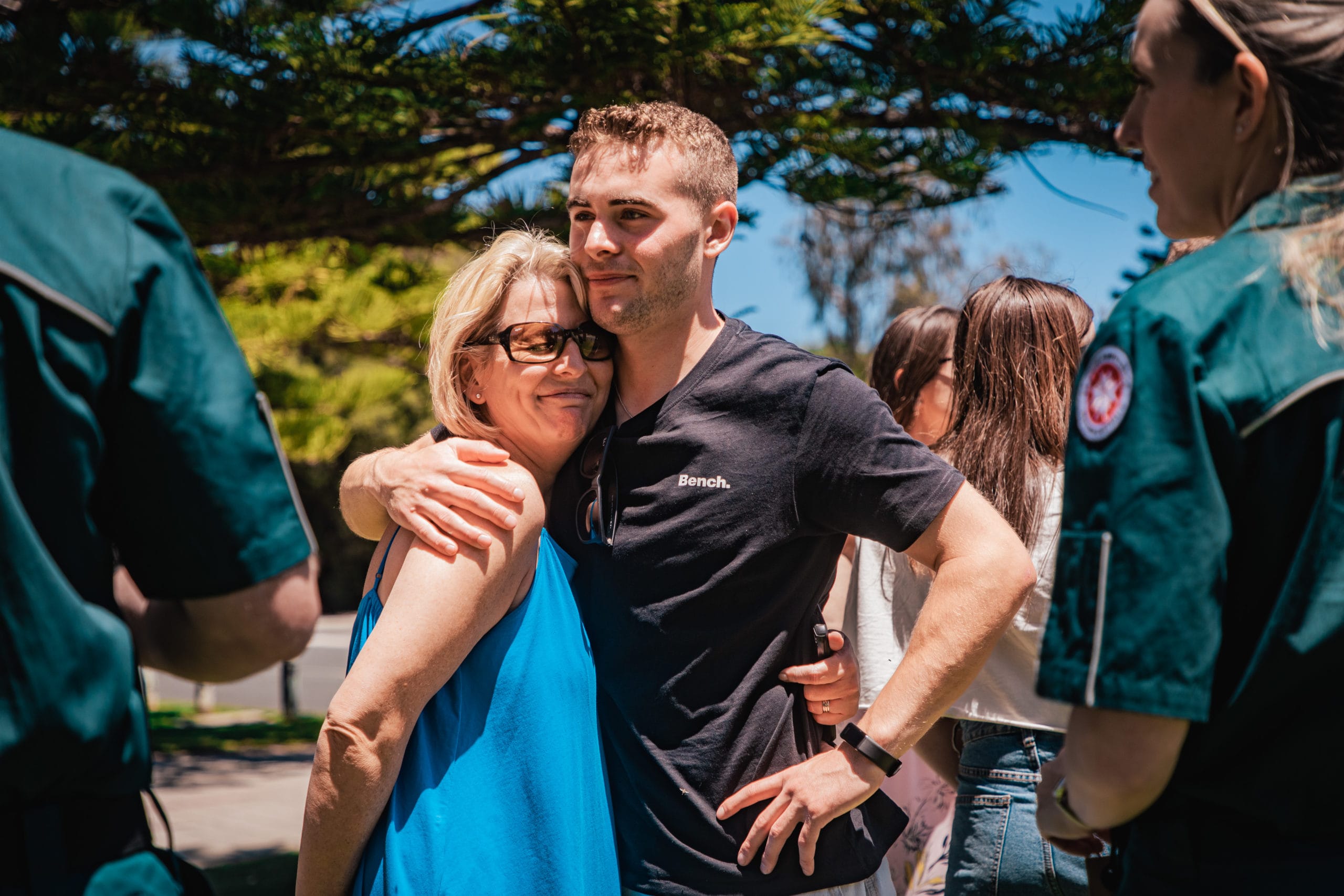Community defibrillator use triples out-of-hospital cardiac arrest survivability, latest report finds
- Bystanders applied Automated External Defibrillator (AED) pads on 180 patients (up 15 per cent on last year), with a defibrillation shock being delivered in 42 per cent of cases.
- Among cardiac arrest patients in the five years to 2022 who received a bystander AED shock, 55.7 per cent had a pulse on arrival at ED and 48.2 per cent survived to 30 days.
- Whereas patients with no defibrillation initiated prior to the arrival of an ambulance officer or paramedic, the chance of a pulse at ED dropped to 26.8 per cent and 30-day survival to 16.5 per cent.
Using community Automated External Defibrillators (AEDs) almost triples the chances of a Western Australian surviving an out-of-hospital cardiac arrest (OHCA), the latest St John WA OHCA Report shows.
Patients with an initial shockable rhythm are 2.9 times more likely to be a 30-day survivor if they get an AED shock ahead of ambulance arrival, as compared to patients who are shocked by an ambulance officer or paramedic, according to 2022 data.
The 2022 OHCA Report, produced in association with the Prehospital, Resuscitation and Emergency Care Research Unit (PRECRU) at Curtin University, showed of the 1182 cases where resuscitation was attempted, 233 (19.7 per cent) had a pulse on arrival at the emergency department.
Ultimately 128 people survived to 30 days, up from 117 in 2021.
Of 1147 adult OHCA patients attempted to be resuscitated, only 25 per cent had a shockable rhythm.
Pleasingly, bystanders applied AED pads on 180 patients (up 15 per cent on last year), with a defibrillation shock being delivered in 75 cases (42 per cent).
Over the five years to 2022, 55.7 per cent of patients who received an AED shock from bystanders had a pulse on arrival at ED, with 48.2 per cent surviving to 30 days.
The significance of early defibrillation in the community is highlighted by the fact that when this does not occur and defibrillation is initiated only after arrival of an ambulance officer or paramedic, the chance of a pulse at ED drops to 26.8 per cent and 30-day survival is at 16.5 per cent.
It reflects well-established research that defibrillation in the first minutes after a collapse due to cardiac arrest, ahead of ambulance arriving, has a vital impact on survival.
Resuscitation on the increase
Promisingly, Western Australians attempting resuscitation of OHCA patients increased for a fifth year, with CPR being performed prior to ambulance arrival in 81.4 per cent of cases – higher than reported by any other Australian jurisdiction.
The 2022 OHCA Report also tells three survivor stories of those ranging in age from 18 to 55 being revived by the valiant efforts of those around them calling Triple Zero (000), undertaking CPR and locating a community defibrillator.
SJWA attended 3115 total OHCA cases in 2022, an 8 per cent increase on 2021 (n=2873), of which 68.4 per cent were in a private residence where the likelihood of being witnessed in those early minutes or having access to an AED significantly decreases.
St John WA Chief of Emergency Brendon Brodie-Hall said first aid skills and community AEDs were vital in the support of ambulance services, especially concerning cardiac arrest.
“The network of locations in Western Australia registered with at least one AED which can be deployed by our State Operations Centre grew 11.4 per cent and the number of publicly available AEDs increased 6.8 per cent in 2022.
“Just last month, St John WA celebrated installation of its 10,000th defibrillator on the network. But more can still be done.
“St John WA advocates for widespread installation and ownership of AEDs to improve the likelihood of survival following OHCA and has invested in the program for more than a decade.”
SJWA Resuscitation Improvement Specialist and Paramedic Jason Belcher agreed and welcomed greater community engagement about installing publicly accessible AEDs on all commercial and community-based buildings, as well as new major residential developments.
“Too many times paramedics will attend a scene where early defibrillation could not be provided by the community because an AED is locked inside a building that can no longer be accessed out of hours,” Mr Belcher said.
“While the number of AEDs accessible 24/7 to the public grew in 2022, they still only represent about a third of all the registered AEDs in the community.”
Call for First Responders
Mr Belcher also hoped more people would register their first aid skills with SJWA’s First Responder App, which alerts members of the community when they are near a cardiac arrest so they can help in the vital first minutes after the Triple Zero (000) call.
“Being able to call on first aid trained Western Australians who may be nearby and have the option to assist may be the difference between life and death,” Mr Belcher said.
“It’s great to report that responders registered through the app grew 12.6 per cent in 2022 to 43,065.
“If someone collapses, is unconscious and not breathing normally remember to CALL PUSH SHOCK. And if a community’s fully automated defibrillator is nearby, I would encourage anyone to use it. It will not deliver a shock if the patient doesn’t need it.
“The only way to make things worse with an AED is to not use it.”
Locations of the registered defibrillators listed on the St John WA Community First Responder Network are easily found on the St John First Responder app.
